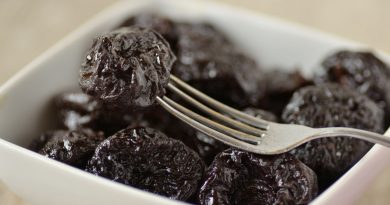The “miracle” edible oil every medicine cabinet needs
By Sari Huhtala
What an evolved world we’d live in if, when you visit the doctor with your child, who has a case of impetigo, or severe acne, or you have an itch below, the doctor looks at you and asks “Have you tried coconut oil?”
The “miraculous healing powers” of the fatty acids found in coconut oil have been used as medicine for nearly 4000 years, and for good reason. It works.
What makes it a miracle drug? The medium chain fatty acids and monoglycerides found mainly in coconut oil break down when ingested or applied topically to release anti-microbial agents monolaurin and lauric acid, among others, according to a 2020 review in the Journal of the Associations of Physicians of India. This anti-microbial action also helps to “activate the anti-inflammatory nature of the immune response in the human body,” enhancing immunity.
Traditionally coconut oil has been used for skin conditions, including psoriasis, cancer, diabetes, diarrhea, and for bacterial, fungal and viral skin infections.
Virgin coconut oil contains higher amounts of nutrients like vitamin E, as well as bioactive compounds like polyphenols, than refined coconut oil.
A 2014 review – Treatment of dermal infections with topical coconut oil – looked at studies of virgin coconut oil (VCO), lauric acid, monolaurin, capric acid and other fatty acids found in coconut oil, and their microbial activity against viruses, fungus and bacteria that cause skin infections.
One in vitro study looked at the fungicidal activity of the capric acid in coconut oil against Candida albicans (C. albicans) and found at higher concentrations, capric acid was effective in killing C. albicans the fastest, with no colonies existing after 10 minutes. After longer incubations of 30 minutes or more, lauric acid was most effective at killing C. albicans, with no measurable growth at 30 minutes, two hours or five hours.
Another study found lauric acid “inhibited growth of all strains of antibiotic resistant S. aureus (MSSA and MRSA).”
An in vitro study of skin samples from impetigo lesions and infected atopic dermatitis taken from 100 newborn to 18-year-old patients looked at the efficacy of monolaurin on both gram-positive and gram-negative bacterial organisms, including S. aureus, coagulase negative Staphylococcus, Streptococcus pyogenes, E. coli, Serratia marcescens, Klebsiella rhinosclermatis, and others. After skin scrapings were incubated for 24 hours, then added to a blood agar plate with monolaurin, researchers discovered all species, except K. rhinosclermatis, showed 100 per cent sensitivity to monolaurin, while 100 per cent sensitivity was not found in any of the antibiotics tested. K. rhinosclermatis had 92.31 per cent sensitivity.
Considering 4000 years of use as medicine, and mountains of scientific evidence in its efficacy in fighting infections stocking the pantry with virgin coconut oil seems only natural.
One might even consider the topical use of coconut oil as good preventative medicine, particularly on any scrape, cut or wound, by applying coconut oil after a thorough cleaning of the injury, since organisms like Staph bacteria can spread easily through cuts and scrapes and coconut oil can help prevent the bacteria from taking hold.
Blend coconut oil with a few drops of vitamin E oil and create an inexpensive day and night cream, while naturally protecting the skin. Use it on hands at night.
Got an itch below? Reach for coconut oil.
In India, coconut oil is used for eliminating tape worms, and is rubbed into the scalp to remove head lice.
By using coconut oil daily, like a spoonful of medicine, one can reduce the possibility of bacteria, viruses, parasites and fungus from taking hold, possibly destroying parasites like giardia before they can “establish a foothold” and wreak havoc on one’s health, according to The Coconut Oil Miracle by Bruce Fife, ND, CN.
(This information is not intended to replace medical advice and treatment from a health care practitioner).
Photo credit: ©DanaTentis via Canva.com
Sari Huhtala is the creator, publisher and editor of Alive and Fit Magazine. She has over 25 years experience in journalism and over 15 years experience as a certified personal trainer and fitness instructor. She is an organic farmer, wild-crafter and grandmother, who has spent over 20 years of navigating a holistic, healthy path for her family.




